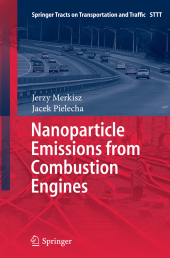 Neuerscheinungen 2016Stand: 2020-02-01 |
Schnellsuche
ISBN/Stichwort/Autor
|
Herderstraße 10
10625 Berlin
Tel.: 030 315 714 16
Fax 030 315 714 14
info@buchspektrum.de |

Jerzy Merkisz, Jacek Pielecha
(Beteiligte)
Nanoparticle Emissions From Combustion Engines
Softcover reprint of the original 1st ed. 2015. 2016. x, 139 S. 129 SW-Abb. 235 mm
Verlag/Jahr: SPRINGER, BERLIN; SPRINGER INTERNATIONAL PUBLISHING 2016
ISBN: 3-319-36880-X (331936880X)
Neue ISBN: 978-3-319-36880-1 (9783319368801)
Preis und Lieferzeit: Bitte klicken
This book focuses on particulate matter emissions produced by vehicles with combustion engines. It describes the physicochemical properties of the particulate matter, the mechanisms of its formation and its environmental impacts (including those on human beings). It discusses methods for measuring particulate mass and number, including the state-of-the-art in Portable Emission Measurement System (PEMS) equipment for measuring the exhaust emissions of both light and heavy-duty vehicles and buses under actual operating conditions. The book presents the authors´ latest investigations into the relations between particulate emission (mass and number) and engine operating parameters, as well as their new findings obtained through road tests performed on various types of vehicles, including those using diesel particulate filter regeneration. The book, which addresses the needs of academics and professionals alike, also discusses relevant European regulations on particulate emissions and highlights selected methods aimed at the reduction of particulate emissions from automobiles.
Introduction.- Characteristics of Particulate Matter Considering Particle Mass and Particle Number.- The Process of Formation of Particulate Matter in Combustion Engines.- Methods of Measuring Particulate Matter Emissions.- Particulate Matter Emissions during Engine Start-up.- Determination of Particulate Matter Equivalents.- Measurements of Particle Mass and Particle Number in Real Traffic Conditions.- The Relationship between Particle Mass and Particle Number.- Methods of Decreasing Emissions of Particulate Matter in Exhaust Gas.- Conclusions.


